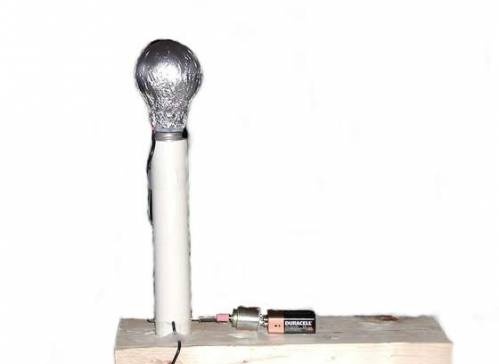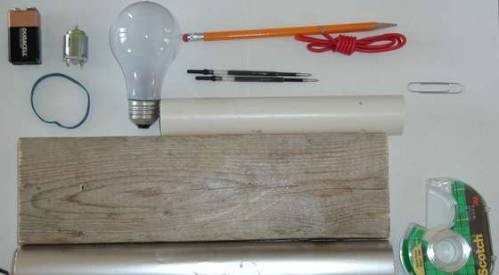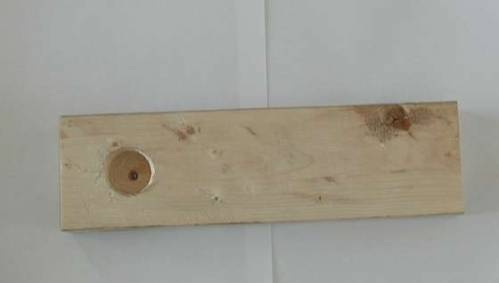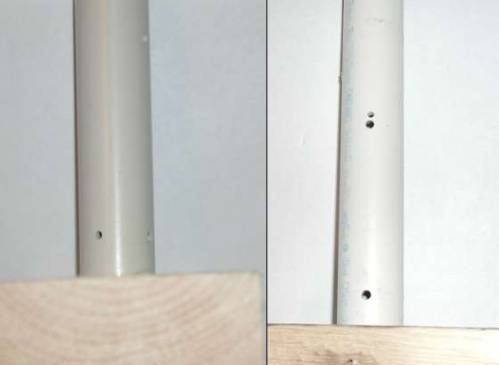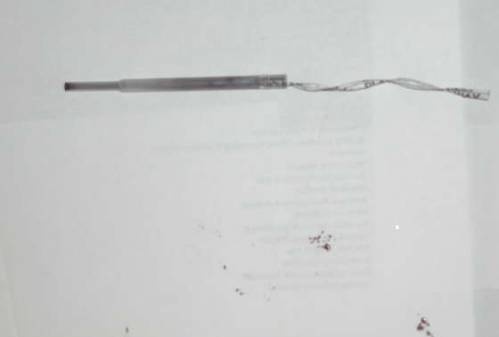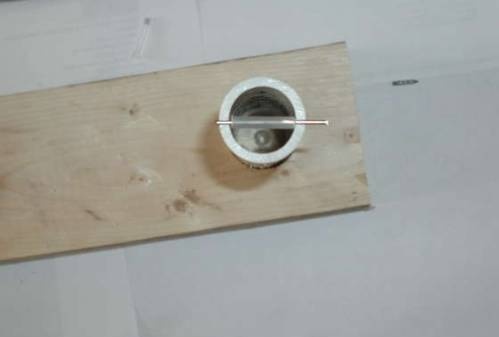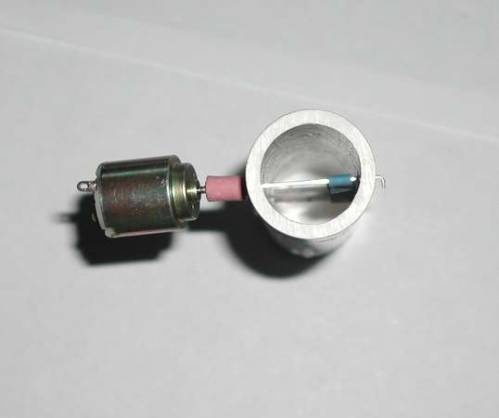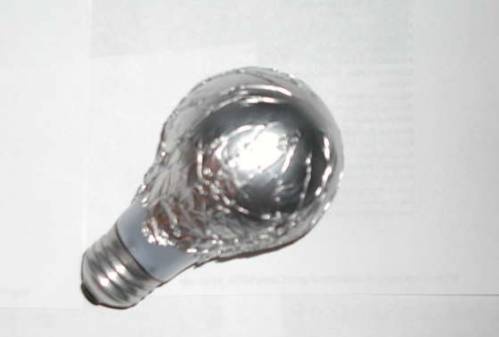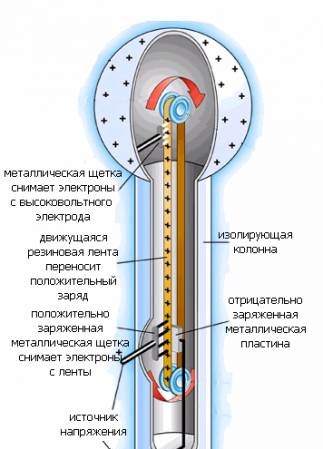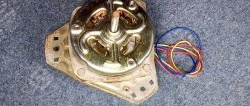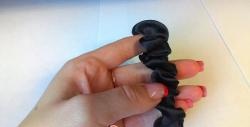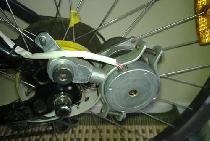DIY Van de Graaff generator
These are the instructions on how I built a DIY Van de Graaff Generator from some unwanted scraps. Here it is in the picture:
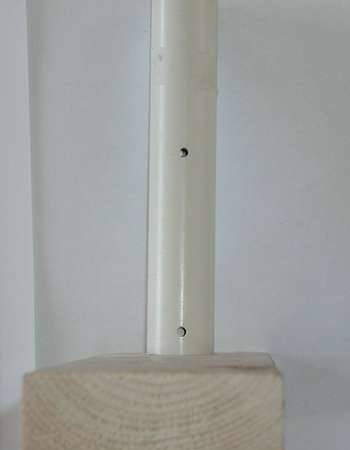
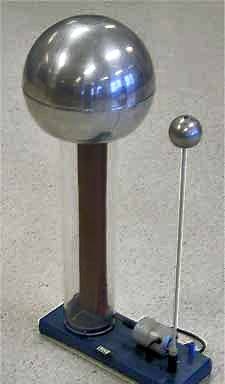
So, the first thing to do is to collect all the necessary components. They include: 1 pencil, two old dried pastes, a piece of PVC pipe, one dead light bulb, a long piece of rubber band, a paper clip, aluminum foil, tape, one small toy motor, a nine-volt battery, and some wire, and a wooden base tablet. Everything is visible in the photo:
The first step in your action will be to drill a hole for the tube at the base of the base. You need to take a drill with a feather drill of the required diameter so that the PVC tube fits tightly.
Next, you make two through holes through both sides of the tube. The distance between the holes is such that when inserting the paste and tension between the pastes of the gum, so that the elastic is slightly stretched. Make sure the rubber is not too tight otherwise it will stop the engine.

Then we make two more holes in the tube. The first hole should be drilled slightly higher than the first one on the same axis. The second hole should be directly perpendicular to the bottom one.Look carefully at the photo:
Now you need to remove the ink from the paste. I used tie tape, like the ones that come with trash bags, to clean out the paste. What you use, think for yourself.
Next, you cut a piece of paste to the length of the inner diameter of the PVC pipe. Then take a paperclip and cut a piece long enough so that the piece protrudes from the tube by at least a centimeter. See photo:
As you probably guessed, we will need two of these rollers. Before assembly, it is necessary to assemble the dielectric film. It is made from tape and our elastic band. The elastic band is covered with tape so that the adhesive sides are glued together. You don’t have to paste over the strip of tape, but simply put an elastic band on top to press it against our rollers.
Then we take a pencil eraser and assemble our structure as shown in the figure below. To ensure a reliable connection, the motor shaft is glued to the eraser and paper clip with super glue.
The next step is to add brushes that collect the charge. The lower brush, as shown in the picture on the left, passes through the hole in the lower part, the tip of the wire should be loosened. You should make sure that the brushes are close to the elastic, but should not touch it. The top brush, as shown in the picture on the right, goes through the top hole.
The next stage and finale is to cover the burnt out light bulb with a piece of aluminum foil. The key is to provide the aluminum with more charge in order to collect as much of it as possible. Then we connect the top wire to this foil on the lamp and insert our lamp-electrode onto the top of the entire structure. Well, now you know how to build a Van de Graaff generator yourself.
That's all! Well, now you can play with static electricity
For reference:
The operating principle of a Van de Graaff generator is very similar to that of a Wimshurst machine, but instead of rotating discs, it uses a moving belt on two pulleys. The belt is electrified by friction against the lower pulley (in large machines it is supplied with additional voltage from a high-voltage source, in small machines there is enough friction), and at the upper end of the belt the charge is removed and accumulates on the surface of the ball. Large Van de Graaff generators are capable of generating voltages of millions of volts and are several meters high.

Similar master classes
Particularly interesting

Cable antenna for digital TV in 5 minutes
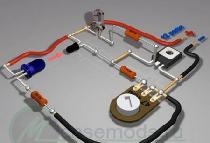
A selection of simple and effective schemes.
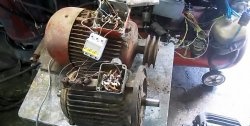
Three-phase voltage from single-phase in 5 minutes
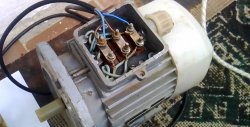
Starting a three-phase motor from a single-phase network without a capacitor

Eternal flashlight without batteries
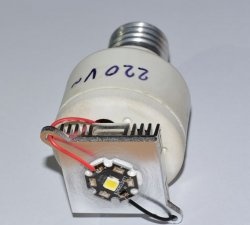
How to make an inexpensive but very powerful LED lamp
Comments (23)

